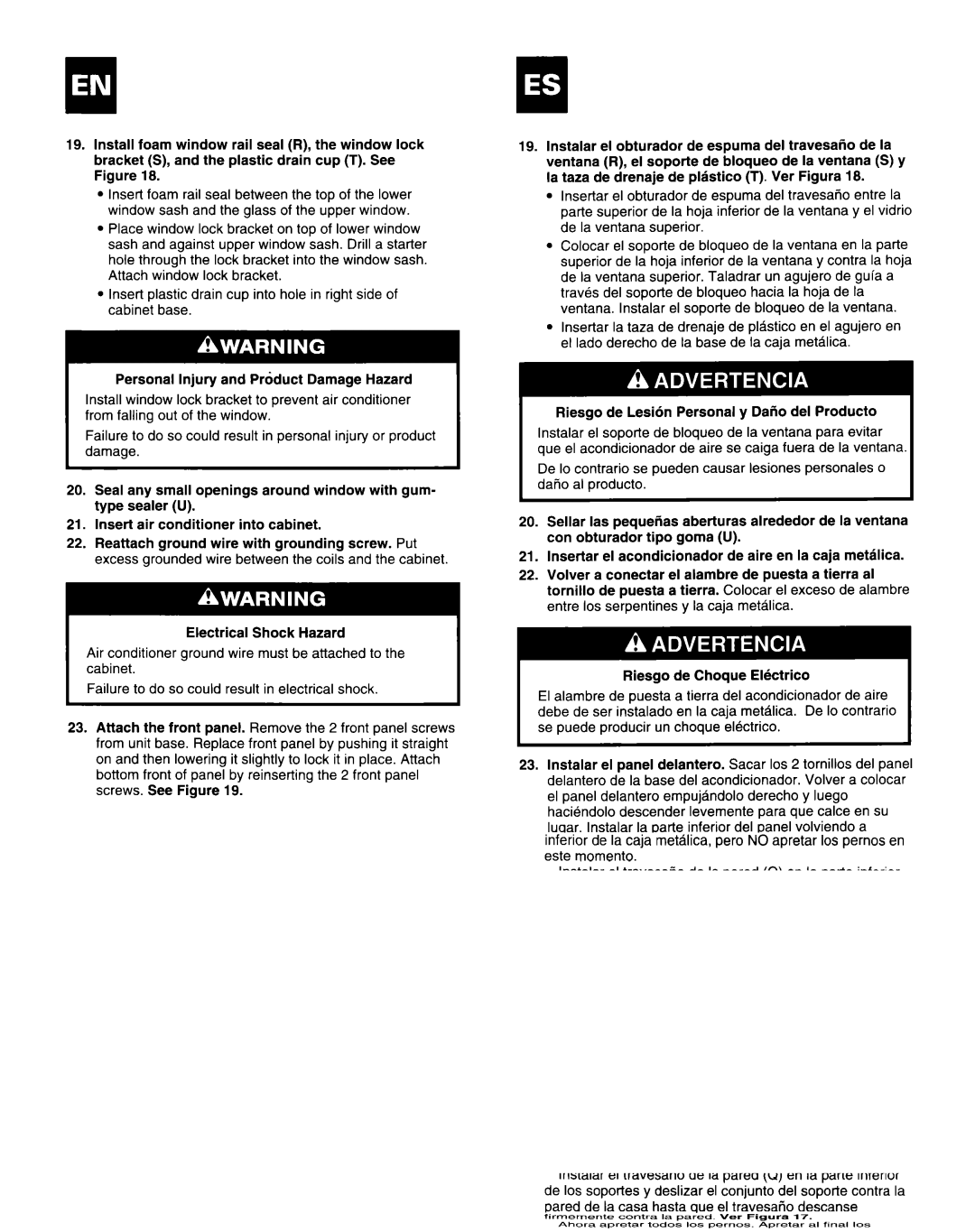Air Conditioner specifications
Roper air conditioners are a popular choice for those seeking reliable cooling systems for their homes or offices. Known for their affordability and efficiency, Roper offers a range of products that cater to diverse cooling needs. These air conditioners come with various features designed to enhance comfort while being easy to operate and maintain.One of the standout features of Roper air conditioners is their energy efficiency. Many models are equipped with energy-saving technology, allowing users to keep energy costs low while maintaining a comfortable indoor climate. The Energy Efficiency Ratio (EER) ratings of Roper units are designed to comply with modern standards, making them an eco-friendly option for consumers conscious of their environmental impact.
Roper air conditioners also prioritize user-friendliness. Most models are equipped with simple control interfaces, allowing users to easily adjust temperature settings, fan speed, and mode of operation. Some advanced models even incorporate programmable timers, enabling homeowners to set cooling schedules that align with their daily routines, further optimizing energy consumption.
In terms of technologies, Roper air conditioners often feature advanced cooling systems with multiple speed settings. This allows for customizable airflow, ensuring that users can achieve their desired level of comfort. Additionally, many models are designed with a dehumidification function, which helps to remove excess moisture from the air, creating a more pleasant indoor environment.
Another characteristic that makes Roper air conditioners stand out is their compact and portable designs. Many units are designed for window installation or can be used as portable air conditioners, giving users flexibility in placement and operation. This makes them an ideal solution for apartments or spaces where traditional central air conditioning systems may be impractical.
Furthermore, Roper air conditioners often come with easy-to-clean filters, promoting better air quality by reducing dust and allergens in the home. Regular maintenance is straightforward, enabling users to keep their units running efficiently over a longer period.
In conclusion, Roper air conditioners are an excellent choice for those looking for cost-effective and efficient cooling solutions. With their focus on energy efficiency, user-friendly design, advanced cooling technologies, and compact features, Roper air conditioners provide comfort and convenience for any setting. Whether for home use or office environments, Roper stands as a reliable option in the competitive air conditioning market.

